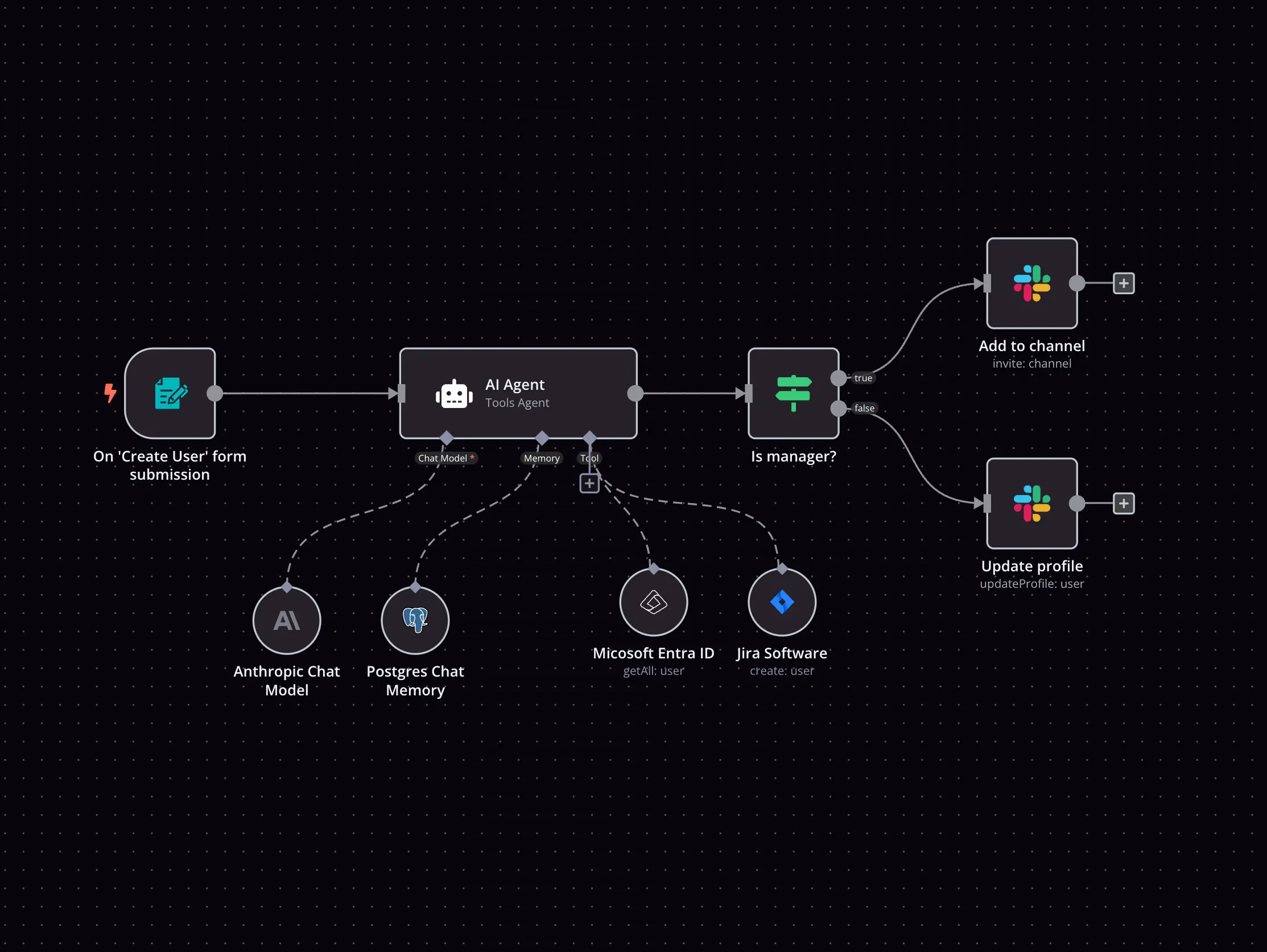Google Drive and Gmail integration
Save yourself the work of writing custom integrations for Google Drive and Gmail and use n8n instead. Build adaptable and scalable Data & Storage, workflows that work with your technology stack. All within a building experience you will love.
How to connect Google Drive and Gmail
Create a new workflow and add the first step
In n8n, click the "Add workflow" button in the Workflows tab to create a new workflow. Add the starting point – a trigger on when your workflow should run: an app event, a schedule, a webhook call, another workflow, an AI chat, or a manual trigger. Sometimes, the HTTP Request node might already serve as your starting point.
Popular ways to use the Google Drive and Gmail integration
✨🩷Automated Social Media Content Publishing Factory + System Prompt Composition
Invoices from Gmail to Drive and Google Sheets
Effortless Email Management with AI-Powered Summarization & Review
🦜✨Use OpenAI to Transcribe Audio + Summarize with AI + Save to Google Drive
✨🔪 Advanced AI Powered Document Parsing & Text Extraction with Llama Parse
Automated PDF Invoice Processing & Approval Flow using OpenAI and Google Sheets
Build your own Google Drive and Gmail integration
Create custom Google Drive and Gmail workflows by choosing triggers and actions. Nodes come with global operations and settings, as well as app-specific parameters that can be configured. You can also use the HTTP Request node to query data from any app or service with a REST API.
Google Drive supported actions
Copy
Create a copy of an existing file
Create From Text
Create a file from a provided text
Delete
Permanently delete a file
Download
Download a file
Move
Move a file to another folder
Share
Add sharing permissions to a file
Update
Update a file
Upload
Upload an existing file to Google Drive
Search
Search or list files and folders
Create
Create a folder
Delete
Permanently delete a folder
Share
Add sharing permissions to a folder
Create
Create a shared drive
Delete
Permanently delete a shared drive
Get
Get a shared drive
Get Many
Get the list of shared drives
Update
Update a shared drive
Gmail supported actions
Add Label
Delete
Get
Get Many
Mark as Read
Mark as Unread
Remove Label
Reply
Send
Send and Wait for Response
Create
Delete
Get
Get Many
Create
Delete
Get
Get Many
Add Label
Delete
Get
Get Many
Remove Label
Reply
Trash
Untrash
Google Drive and Gmail integration details
Google Drive and Gmail integration tutorials

6 e-commerce workflows to power up your Shopify store
Want to power up your online business and win back time? Discover how no-code workflow automation can help!

15 Google apps you can combine and automate to increase productivity
Learn how to combine and automate popular Google apps for more productivity in the workplace.

Using automation to boost productivity in the workplace
Instead of using IFTTT or Zapier, which can be pretty limiting on a free tier, I decided to try n8n, which is a fair-code licensed tool.
FAQ
Can Google Drive connect with Gmail?
Can I use Google Drive’s API with n8n?
Can I use Gmail’s API with n8n?
Is n8n secure for integrating Google Drive and Gmail?
How to get started with Google Drive and Gmail integration in n8n.io?
Need help setting up your Google Drive and Gmail integration?
Discover our latest community's recommendations and join the discussions about Google Drive and Gmail integration.

How do I remove n8n Email footer in Gmail node send message?
jake chard
Each email sent has “This email was sent automatically with n8n” in the footer or after the email. How do I remove this please?
Open topic

Sending attachment via Gmail
Jan Koch
Describe the problem/error/question I am trying to send an email with an attachment using the Gmail node and get an error that I don’t understand. I am able to download that file from the original email and upload it to …
Open topic

Gmail Trigger - How to ignore?
Paul Kennard
I am new, so I am as interested in any recommendations on how to find the answer as I am the actual answer. I built a workflow that involves the Gmail Trigger - specifically, when someone emails me and the subject matche…
Open topic

Google Drive Search File/Folder Returns Folder Id, not Contents
hubschrauber
Goal Trying to use the Google Drive node to get the list of files / sub-folders in a specified folder. Workflow Setup Based on this I set up the Google Drive node with: Resource: File/Folder , Operation: Search , Sear…
Open topic

Connecting to Google on localhost
Jon
I am stuck on creating a Google Drive connection to my google account. I’ve been following guide in this Youtube video: https://www.youtube.com/watch?v=gZ6N2H3_vys&ab_channel=n8n I made sure the Google Drive API was en…
Open topic
Looking to integrate Google Drive and Gmail in your company?
The world's most popular workflow automation platform for technical teams including
Why use n8n to integrate Google Drive with Gmail
Build complex workflows, really fast


